BIG BANG NEWS
RESEARCH, TECHNOLOGY, SCIENCE, DIACHRONIC NEWS, COMMENTS, ,SPORTS,MUSIC,SKY AND STARS,AND MUSH MORE.
Αναζήτηση αυτού του ιστολογίου
Κυριακή 4 Αυγούστου 2013
Σάββατο 3 Αυγούστου 2013
Παρασκευή 2 Αυγούστου 2013
INTERNATIONAL NEWS
Weapons cache explodes in Homs
Posted: 01 Aug 2013 01:52 PM PDT
A massive weapons cache exploded in the Wadi al-Thahab neighborhood of Homs, Syria today. Opposition groups claimed "forty people were killed and at least 120 people were wounded," according to Reuters.
US drones kill 5 AQAP operatives in Yemen
Posted: 01 Aug 2013 11:36 AM PDT
The US launched its third drone strike in Yemen in the past five days, killing five al Qaeda in the Arabian Peninsula operatives in an area in eastern Yemen that is said to be under the control of the terrorist group.
The remotely piloted Predators or the more deadly Reapers launched a pair of missiles at a target in the Qatan Valley in Hadramout province today, killing five "al Qaeda militants," and wounding three others, Xinhua reported. Reuters said the missiles struck a car, while Xinhuareported that the strike took place at an "al Qaeda-held site in the Qatan valley" that is "used for training terrorists."
No senior al Qaeda operatives or leaders are reported to have been killed at this time. The identities of the al Qaeda operatives who were killed have not been disclosed.
Hadramout is the ancestral home of Osama bin Laden's family, and the province has become an AQAP bastion over the past several years.
In 2012, the US stepped up drone strikes against AQAP in Hadramout. Prior to May 2012, there were zero US drone strikes in the province. From mid-May until the end of 2012, the US launched seven attacks in Hadramout. Seven of the 42 drone strikes in Yemen in 2012, or 17%, have taken place in the province. Today's strike in Hadramout is the first in the province so far this year.
Since losing control of large areas of Abyan and Shabwa, AQAP has spread out into the provinces of Aden, Baydah, Al Jawf, Damar, Hadramout, Hodeida, Ibb, Marib, Saada, and Sana'a. Of the 35 drones strikes recorded by The Long War Journal over the past 12 months, 28 have taken place in the provinces of Aden, Baydah, Al Jawf, Damar, Hadramout, Hodeida, Ibb, Marib, Saada, and Sana'a.
Background on US strikes in Yemen
The US has launched 15 drone strikes in Yemen so far this year, but the pace of the strikes has decreased since last year. In 2012, the US launched 42 drone strikes in Yemen against AQAP and its political front, Ansar al Sharia. The previous year, the US launched 10 drone and air strikes against the al Qaeda affiliate. The strikes are being reduced as the US government is facing increasing international criticism for conducting the attacks in both Yemen and Pakistan.
The US has stepped up attacks in Yemen; today's strike is the third in five days. Two days ago, on July 30, US drones killed three AQAP fighters, including a Saudi operative, in a strike in Shabwa province. The previous strike, on July 27, which is said to have killed six AQAP fighters in the Al Mahfad area in Abyan province, broke a seven-week pause in drone activity in Yemen.
Although six senior AQAP operatives, including the group's deputy emir, Said al Shihri, were killed in strikes in Yemen in 2012, the group's top leadership cadre remains intact. Just two weeks ago, AQAP confirmed that al Shihri, a former detainee at Guantanamo Bay, was killed; he is thought to have died or to have been seriously wounded following a strike in October 2012.
The US has targeted both senior AQAP operatives who pose a direct threat to the US, and low-level fighters and local commanders who are battling the Yemeni government. This trend was first identified by The Long War Journal in the spring of 2012 [see LWJ report, US drone strike kills 8 AQAP fighters, from May 10, 2012]. Obama administration officials have claimed, however, that the drones are targeting only those AQAP leaders and operatives who pose a direct threat to the US homeland, and not those fighting AQAP's local insurgency against the Yemeni government.
For more information on the US airstrikes in Yemen, see LWJ report, Charting the data for US air strikes in Yemen, 2002 - 2013.
3 al Qaeda military 'training experts' killed in US drone strike in Pakistan
Posted: 31 Jul 2013 08:07 PM PDT
A Pakistani Taliban commander said that the US killed three al Qaeda military "training experts" in a drone strike in North Waziristan that took place last weekend. Al Qaeda continues to support Taliban military operations in Afghanistan and conduct its own attacks despite claims from US commanders that the terrorist group is merely fighting for its survival in the country and maintains a minimal presence.
The US drone strike, which took place on July 28 in the Shawal Valley in North Waziristan, a known hub for terrorists crossing into Afghanistan, is reported to have killed four Arabs and four Taliban fighters.
The Taliban commander told Reuters that the Arab fighters were "al Qaeda training experts who had crossed the border from Afghanistan to look at ways of setting up a similar camp on Pakistani territory." The al Qaeda fighters were identified as "Abu Rashid from Saudi Arabia, Muhammed Ilyas Kuwaiti from Kuwait, and Muhammed Sajid Yamani from Yemen."
US intelligence officials who track al Qaeda in the region told The Long War Journal that they are aware of the reports of the deaths of the al Qaeda operatives, but would neither confirm nor deny them.
The Lashkar-al-Zil, or the Shadow Army, al Qaeda's paramilitary force that fields small conventional units in both Afghanistan and Pakistan, is known to operate training camps in Pakistan and Afghanistan. Pakistan's tribal areas, which include North and South Wazirstan, host training camps for al Qaeda as well as a multitude of allied jihadist groups from inside and outside of Pakistan. In Afghanistan, al Qaeda is known to operate training camps in the remote northeastern provinces of Kunar and Nuristan.
The Lashkar-al-Zil embeds military trainers within Taliban units in both countries. These trainers provide instructions for battling security forces in local insurgencies and furnish knowledge, expertise, funding, and resources for conducting local and international attacks. The US Treasury Department officially acknowledged the existence of this unit when it added one such Pakistan-based trainer and commander of al Qaeda's "paramilitary brigades" to the list of global terrorists in June. [For more information on this unit, see LWJreport, Al Qaeda's paramilitary 'Shadow Army,' from February 2009.]
The US may have killed Abu Saif al Jaziri, a mid-level paramilitary commander from Algeria who works with the Haqqani Network in the region, in a drone strike on July 2 in North Waziristan. A Haqqani Network commander known as Maulana Akhtar Zadran and two Pakistani jihadists are also reported to have been killed in the strike.
US officials downplay al Qaeda's importance in Afghanistan
US military officials continue to downplay al Qaeda's presence in Afghanistan, despite ample evidence that the group is active in the country as well as in Pakistan.
In an interview on July 28, General Joseph Dunford Jr., the Coalition commander in Afghanistan, said al Qaeda was merely a "shell" of its former self, with only about 75 members in Afghanistan, who were mostly too busy trying to stay alive to plan attacks against the West, theNew York Times reported.
Similarly, Major General Joseph Osterman, the deputy operations commander of the International Security Assistance Force, told Reuterslast week that al Qaeda is fighting for its survival in Afghanistan and is isolated primarily in Nuristan province.
"They are less than 100, I would say, and they are in fact just trying to survive at this point," Osterman told Reuters. "I think what you find is that it's not necessarily that they have got a springboard in there."
Since the summer of 2010, Obama administration officials have been consistently claiming that 50 to 100 al Qaeda operatives are present in Afghanistan [for examples, see Threat Matrix reports, The 'only 50 to 100' al Qaeda in Afghanistan fallacy, from July 2010; and How many al Qaeda operatives are now left in Afghanistan?, from April 2011].
But a study by The Long War Journal that looks at ISAF's own reports on its raids against al Qaeda since 2007 paints a different picture. Since 2007, ISAF has conducted 357 reported raids against al Qaeda and allied groups in Balkh, Farah, Ghazni, Helmand, Kandahar, Khost, Kunar, Kunduz, Laghman, Logar, Nangarhar, Paktia, Paktika, Sar-i-Pul, Takhar, Wardak, and Zabul, or 17 of Afghanistan's 34 provinces. Many of these raids have taken place over the past three years.
ISAF's data on the location of al Qaeda's network is mirrored by al Qaeda's propaganda. Al Qaeda routinely reports on its Afghan operations in Vanguards of Khorasan, a magazine produced for its members and supporters. Al Qaeda has reported on operations in all of the provinces where ISAF has conducted raids.
At the end of June, after completing its transition of security responsibilities to the Afghan National Security Forces, ISAF stopped reporting on its raids against al Qaeda, shutting off a window into how it targets al Qaeda's network in Afghanistan.
US officials claim Israeli strike in Latakia missed some Yakhont missiles
Posted: 31 Jul 2013 05:33 PM PDT

Almost three weeks after confirming that Israel carried out an airstrike against Yakhont missiles near the Syrian port city of Latakiaon July 5, US officials now say that some of the missiles were not hit as they had been moved in advance.
The New York Times reports:
American intelligence analysts have concluded that a recent Israeli airstrike on a warehouse in Syria did not succeed in destroying all of the Russian-made antiship cruise missiles that were its target, American officials said on Wednesday, and that further Israeli strikes are likely.
...While the warehouse was destroyed, American intelligence analysts have now concluded that at least some of the Yakhont missiles had been removed from their launchers and moved from the warehouse before the attack.
...After the Israeli attack, the Assad government sought to hide the fact that the missiles had been missed by setting fire to launchers and vehicles at the site to create the impression that the strike had landed a devastating blow, according to American intelligence reports.The New York Times further reports that American officials said the Israeli jets "flew over the eastern Mediterranean, fired air-to-ground missiles and never entered Syrian airspace."
The Daily Beast previously reported that a Defense Intelligence Agency (DIA) assessment had concluded that Israeli jets had used "precision-guided munitions" to hit their targets in Latakia.
In the days after the July 5 strike, Israeli media outlets released satellite imagery of the location of the strike. In one of the images, a warehouse appeared to have been destroyed along with its contents, while another image showed a series of storage warehouses, some of which appeared to have taken hits.
Today's leaks come just a couple of days after Israeli media reported that the Israeli Navy was installing a defense system on its missile boats that is intended to protect against a number of threats, including the Yakhont anti-ship missile.
Since the start of the uprising against Bashar al Assad in Syria, the Israeli Air Force (IAF) has carried out at least three other strikes in Syria. In those strikes, Israeli aircraft never entered Syrian air space, according to reports, but rather used a lofting maneuver while over Lebanon.
In late January, the IAF reportedly struck targets near the Scientific Studies and Research Center (Centre D'Etudes et de Recherches Scientifiques) in Jamraya. According to reports, the IAF targeted a weapons convoy, which included Russian-made SA-17 antiaircraft missiles, near the facility.
While some reports of the January strike suggested that the SSRC facility itself was targeted and "flattened," satellite imagery revealed that the facility, known for its ties to Syria's chemical weapons program, was relatively unscathed. The images did show a burnt road near the facility, possibly indicating the location of the Syrian weapons convoy when it was hit, however.
In early May, the IAF carried out two separate strikes in Syria. The first strike, on May 3, reportedly targeted Fateh-110 surface-to-surface missiles from Iran, which were located at Damascus International Airport. According to the New York Times, the missiles were flown through Iraqi airspace from Iran before reaching Damascus, where they were destroyed. The second strike, on May 5, reportedly retargeted the SSRC facility that was struck in January.
Although Israeli officials have not taken official responsibility for any of the alleged strikes, they have repeatedly warned that they are prepared to act in Syria to prevent Hezbollah and other terror groups from obtaining advanced weaponry.
Taliban step up operations in the north, ISAF buries head in sand
Posted: 31 Jul 2013 04:01 PM PDT

Last September, President Barack Obama claimed that the US-led military effort had "broken the Taliban's momentum in Afghanistan, and begun the transition to an Afghan lead." That same month, then US Secretary of Defense Leon Panetta maintained that 2012's frequent insider attacks, the "green-on-blue," were evidence of the "last gasp" of the al Qaeda-allied group.
We here at The Long War Journal/Threat Matrix have disagreed with that position on Afghanistan as put forth by the Obama administration and the Department of Defense, and have stated that the situation in the country has not improved despite some tactical successes in the south [see LWJ report, Analysis: The Taliban's 'momentum' has not been broken]. We still maintain this view. Oddly enough, ISAF's own statistics supported our case [see also LWJ report, ISAF analysis shows Afghan violence remains worse than before surge].
And in February of this year, NATO's International Security Assistance Force had to admit that its data, which didn't support its case for an improving security situation, was fatally flawed to begin with. Shortly after this error was reported, ISAF stopped its monthly statistics updates, claiming that the Afghan data used to create the reports were unreliable. You can be sure if the Afghan statistics reported were good news, ISAF would have continued with the monthly reports.
Today the UN reported that civilian casualties in Afghanistan were up by 23 percent in the first six months of 2013 when compared to the same time period in 2012. While a rise in violence may be expected with the drawdown in Coalition forces and reduction in key combat enablers such as air strikes, the fact that the Taliban can significantly increase the violence should dispel the notion that the Taliban are the spent force portrayed by the Obama administration and ISAF.
In addition, this grim report at Der Spiegel yesterday on the security situation in the Afghan north shows that Germany, like the US, continues to bury its head in the sand as bad news rolls in:
Meanwhile, the security situation in the country is continuing to deteriorate. Instead of the stabilization it had hoped for, ISAF's Kabul headquarters now receives almost daily reports of dead and wounded soldiers. The casualty numbers declined in 2012 but have risen sharply since the beginning of this year.
"The security situation in some of the known problematic regions in the north has worsened appreciably since the beginning of the spring offensive," reads a July 11 internal diplomatic cable from the German consulate in Mazar-e-Sharif. Last Monday it emerged that the Taliban has killed 2,748 police officers just in the past four months.
Note that Taliban attacks are intensifying in areas where ISAF forces are no longer present. And also note that the special operations raids are rarely occurring in these areas, according to a German diplomatic cable mentioned in the Der Spiegel article:
The Taliban's attacks target the Afghan National Security Forces (ANSF), which for six weeks now have been officially responsible for protecting the people here. "Against the background of the transition process agreement, the number of attacks on ANSF forces and civilians has seen a sharp increase," the diplomatic cable from Mazar-e-Sharif reads. The Taliban feels "freer" in the provinces where the international troops have withdrawn, the cable continues, particularly as nighttime raids are rarely carried out there anymore.
Like the US and ISAF, the Bundeswehr is suppressing bad information in order to project a positive image of the mission. By ignoring Afghan statistics, the Bundeswehr is doing exactly what ISAF did in March when it decided to end its reporting on the security situation: claim that the Afghan statistics are imprecise. The Der Spiegel report continues [emphasis added below]:
This has serious consequences for development projects, the diplomats warn. They fear even the legitimation of the Afghanistan mission itself is at stake and that it will no longer be possible to credibly convey the mission's "core message" -- that Germany will remain involved in long-term civilian development aid "regardless of the conclusion of ISAF."
Germany's Defense Ministry, too, is starting to sense that the Afghanistan mission, already unpopular among Germans, is in danger of becoming a PR disaster with its constant stream of bad news.
In response, the Defense Ministry's strategists have adopted a new communications strategy -- ignore all bad news and banish any data that show an increasing number of attacks to the realm of statistical imprecision.The logic here is that, now that the Bundeswehr itself only rarely carries out missions, it is dependent on statistics from its Afghan partners, which aren't necessarily reliable. The new policy is to redefine the security situation in ways that no longer rely exclusively on the available statistics. Anything that doesn't fit is made to fit.
With the Taliban and their allies showing no sign of letting up on military operations, the pipe dream of negotiations with the Taliban dead on arrival, and Pakistan's continuing state sponsorship of the Taliban, the situation is not likely to improve as Coalition forces draw down. Meanwhile, the US and the West are whistling past the graveyard. We'd all better get used to this.
Πέμπτη 1 Αυγούστου 2013
Τετάρτη 31 Ιουλίου 2013
Τρίτη 30 Ιουλίου 2013
Enhanced video - Shooting of Sammy Yatim by Toronto Police
A knife wielding 18yr old man is shot 9 times by police and then tazed. He later died. This happened recently in my home city.
Please watch this and share your thoughts...is this poor judgement or poor training? Or is this a textbook example of good police work? What did we just see? -GN
ΔΙΕΘΝΗ ΝΕΑ
Takfiri tug of war
Posted: 29 Jul 2013 03:41 PM PDT
Unverified video of a jovial tug of war contest "between Jabhat al Nusra and Islamic state in Aleppo." Al Qaeda and its rebranded offshoots have attempted to burnish their bloody, intolerant image in Syria with a series of family-friendly events.
See Threat Matrix: Ice cream with al Qaeda.
Ice cream with al Qaeda
Posted: 29 Jul 2013 12:09 PM PDT
Circulating video of a friendly "tug of war between Jabhat al Nusra and Islamic state in Aleppo."
Al Qaeda is attempting to burnish its image in Syria with a family-friendly public relations campaign. The Washington Post reports:
The jovial tug o' war and children's ice-cream-eating contest wouldn't look out of place at any town fair. But the family festivities in the battle-scarred Syrian city of Aleppo had a surprising organizer: al-Qaeda.
The media arm of the Islamic State of Iraq and the Levant, an al-Qaeda affiliate, has been churning out videos featuring community gatherings in Syria during the Muslim holy month of Ramadan as the group battles to win hearts and minds. It is a far cry from the organization's usual fare of video offerings, which includes public executions.
The attempt to soften Islamic State's image comes as it struggles to win support in the areas of Syria that are outside government control. Many residents view the group as a foreign force more concerned with imposing Islamic law than with fighting against President Bashar al-Assad and his allies.
"They are well aware that people out there on principle don't like lots of foreign fighters coming in to fight jihad in their country. They are aware they need to reassure people their presence isn't negative," said Charles Lister, an analyst at IHS Jane's Terrorism and Insurgency Center. "Ramadan parties and ice-cream-eating competitions are one localized example of that. Whether they will be successful remains to be seen, will depend on other armed groups and how they portray them."
The Islamic State of Iraq seems to have learned a few lessons from the disastrous public image it developed during the Iraq war, a failure that morphed a majority in one of its most amenable target markets -- relatively conservative Sunni Muslims from Anbar province -- into bitter enemies. Even so, it's doubtful the group and like-minded takfiris will be able to restrain their natural radical impulses for long. Nor is it likely that a little ice cream and the establishment of a complaints department will win Syrian popular opinion, as al Qaeda's tendency to assassinate competitors, claim territory, impose draconian courts, and kill civilians, including children, for blasphemy becomes even more manifest.
Security from a CH-53E
Posted: 29 Jul 2013 06:51 AM PDT

[click on photo for larger image]
US Marine Sgt. Eric R. Wagner provides aerial security from the back of a CH-53E Super Stallion helicopter during an operation over Helmand province in Afghanistan, July 18, 2013. Wagner, a crew chief, is assigned to Marine Heavy Helicopter Squadron 461. US Marine Corps photo by Corporal Ashley E. Santy.
US drones kill Taliban, 'Arab' fighters in strike in North Waziristan
Posted: 29 Jul 2013 07:32 AM PDT
The US killed eight "militants" in an area of Pakistan's Taliban-controlled tribal agency of North Waziristan that is known to serve as a gateway for terrorist groups entering Afghanistan. The drone strike is the first in Pakistan in two weeks.
The CIA-operated, remotely piloted Predators or the more deadly Reapers fired a pair of missiles at a compound last night in the village of Shinkai Narai in the Shawal area of North Waziristan. The strike took place as the fighters were preparing to break their fast and eat their Iftar dinner, Geo News reported.
Tribesmen said that four "Arab fighters" were among those killed in the strike, while Dawn reported that "there is a possibility that a high profile figure was killed." The identities of the Arabs and the "high profile figure" were not disclosed, however.
The Pakistani government, in a statement released by the Foreign Ministry, immediately protested the attack, which it described as "counter-productive."
"The Government of Pakistan strongly condemns the US drone strike that took place in Shawal Area in North Waziristan on the night of 28 July 2013," the Foreign Ministry said. "These unilateral strikes are a violation of Pakistan's sovereignty and territorial integrity. Pakistan has repeatedly emphasized the importance of bringing an immediate end to drone strikes."
The Shawal Valley, where last night's strike took place, is a known haven for al Qaeda and other terror groups operating in the region. A host of Taliban, Pakistani, and foreign terrorist groups gather in the Shawal Valley and then enter Afghanistan to fight US, NATO and Afghan government forces.
The last US drone strike to hit the Shawal Valley took place on on June 7. That strike killed a "key Pakistani Taliban commander" who was known as Mutaqi and Bahadar Khan. The compound where Muqati and his followers were staying was struck "when a pick-up truck arrived from the bordering area of Afghanistan,according to Dawn. Mutaqi and his fighters "were planning to cross over into Afghanistan."
In the past, the US has focused its operations on the Shawal Valley. Last year, 10 of the 46 drone strikes in Pakistan, or 22%, hit targets in the Shawal Valley. Targeting in the area was heavy during the summer of 2012; at one point in time, seven of 10 strikes took place there.
Al Qaeda, the Movement of the Taliban in Pakistan, and Taliban fighters under the command of Hafiz Gul Bahadar, the leader of the Taliban in North Waziristan, are all known to operate in the Shawal Valley, which is near the Afghan border. The area is used to launch attacks across the border in Afghanistan. Additionally, Central Asian terror groups are known to operate in the area. On July 1, 2012, a US drone strike killed several members of the Turkistan Islamic Party, an al Qaeda-affiliated group that operates in Pakistan, China, and Central Asia.
Bahadar administers the Shawal Valley. In 2009, after the Pakistani military launched an offensive in the Mehsud areas of South Waziristan, Bahadar sheltered the families of Hakeemullah Mehsud, the leader of the Movement of the Taliban in Pakistan, and Waliur Rehman [see LWJ report, Taliban escape South Waziristan operation]. The US killed Waliur Rehman along with his deputy Fakhar-ul-Islam, two Uzbeks, and three Taliban fighters in a drone strike in North Waziristan on May 29.
Despite the known presence of al Qaeda and other foreign groups in North Waziristan, and requests by the US that action be taken against these groups, the Pakistani military has indicated that it has no plans to take on Hafiz Gul Bahadar or the al Qaeda-linked Haqqani Network. Bahadar and the Haqqanis are considered "good Taliban" by the Pakistani military establishment as they do not carry out attacks inside Pakistan. In June 2012, Bahadar banned polio vaccinations in North Waziristan, in protest against US drone strikes.
Today's strike is the first since July 13, and just the fourth since President Barack Obama's speech at the end of May outlining a reduced US counterterrorism role in the world. Obama said that the drones, which are currently operated by the CIA, will eventually be turned over to the military, and that the pace of the strikes will be reduced. Even though al Qaeda has expanded its operations in Pakistan, Iraq, Syria, Yemen, Somalia, Egypt, and in North and West Africa, Obama claimed that the terrorist organization has been sufficiently weakened.
The US has launched 18 drone strikes in Pakistan so far this year, according to data compiled by The Long War Journal. The number of strikes in Pakistan has decreased since a peak in 2010, when 117 such attacks were recorded. In 2011, 64 strikes were launched in Pakistan, and in 2012 there were 46 strikes.
The US has targeted al Qaeda's top leaders and its external operations network, as well as the assortment of Taliban and Pakistani jihadist groups operating in the region. The strikes have been confined mostly to North and South Waziristan. Of the 343 strikes recorded since 2004, 326, or 95%, have taken place in the two tribal agencies.
Is one of the Burgas terror suspects actively using Facebook?
Posted: 29 Jul 2013 08:05 AM PDT

Hezbollah operatives Meliad Farah, left; and Hassan El Hajj Hassan, right.
On July 25, Bulgarian authorities released the names and photos of two Hezbollah operatives, Hassan el Hajj Hassan and Meliad Farah, who are wanted in connection with the July 2012 terror attack in Burgas that killed five Israeli tourists and one Bulgarian national. Subsequent press reports have made a few new claims regarding the suspects, whose names were known to investigators since at least February, such as that the suspects received $100,000 in money transfers from Hezbollah and that they smuggled parts of the bomb on a train from Poland.
Yet an interesting detail about the elder suspect appears to have gone relatively unnoticed. Farah, an Australian national who is believed to have built the bomb in Bulgaria, may still be active on Facebook as authorities search for him.
One Facebook account possibly attributable to Farah states that the user studied at the Lebanese International University (LIU) and lives in Australia. According to press reports, the printer utilized to create the forged licenses carried by the Hezbollah cell responsible for the Burgas terror attack was based at LIU, where the suspects are said to have studied engineering.
The user of this account, who has 'liked' an array of celebrities and athletes, including Usher and David Beckham, appears to have used online chat services, such as Tohla and Omegle, among others. The user of the account was also involved in online poker via Facebook.

Interestingly, none of the publicly available photos linked to the account provides a match to the photo released by Bulgarian authorities. In fact, the user has used photos of Turkish actor Necati Şaşmaz and Iranian actor Mostafa Zamani as profile pictures. A photo of Zamani is currently adopted as the user's profile picture.
The last public activity for this account, which has 62 friends, was today, July 29, when the user became friends with a few women based in Bulgaria, including at least one in Burgas.

A second account potentially tied to the wanted Meliad Farah shares a few Facebook friends with the first account. In addition, the account, which says Farah is married, lists his hometown and current location as Sydney, Australia.

Coincidentally, the second account, which currently has 65 friends and 'liked' a page about the AK-47, has uploaded a few of the same photos used by the first Meliad Farah account.

The user also appears to have played online poker via Facebook similar to the first account. In addition, the second account 'liked' a number of the same pages as the first account. The second account 'liked' nearly twice as many pages as did the first suspect account, however, including one honoring former Hezbollah spiritual guide Muhammad Hussein Fadlallah.
Also, while the first account used a photo of Iranian actor Mostafa Zamani as its profile picture, the second account appears to use a photo of the aforementioned Necati Şaşmaz.
Of further note is the fact that the second account, which was used as recently as July 26, became friends lately with a number of women in Bulgaria, at least one of whom is also friend of the first account. It is also eye-catching that a couple of the friends of the second account have hardcore Hezbollah material on their own Facebook accounts.

Finally, a third account potentially tied to Farah, who allegedly returned to Lebanon a day before the attack in Burgas, was started on June 12, 2012. Within a day of starting the account, the user changed its profile picture to an image seen on a number of websites and videos sympathetic to Hezbollah.
This account appears to have taken greater steps to limit how much of the profile can be viewed by the public, so not much else can be gleaned.

While it is currently close to impossible to definitively say that any of these accounts are tied to the Meliad Farah wanted in connection with the Burgas terror attack, there are lots of coincidences.
Almost too many.
Afghan forces kill Taliban shadow district governor in Faryab province
Posted: 28 Jul 2013 08:15 PM PDT
Afghan security forces have continued their push against Taliban strongholds in the increasingly restive northern province of Faryab. Senior Afghan officials revealed earlier today that their forces killed a Taliban shadow district governor, Mullah Shafiq, along with a Taliban military leader in an operation yesterday near the border with Turkmenistan.
More details were provided by Afghan TOLOnews:
Local officials on Sunday confirmed the killing of Taliban shadow district governor, Muallah Shafiq and a Taliban leader during an Afghan Security Forces' operation in northern Faryab province Saturday. Officials further added that there were no Afghan Forces casualties.
The incident took place in the Qurghan district after the Security Forces targeted Mullah Shafiq and the Taliban leader in the area.
"We had information that the Taliban shadow district governor for Qurghan and the commander were passing through the area. The Security Forces were ready to target them," said Gen. Nabi Jan Mullahkhil, Provincial Police chief.
The killing of Mullah Shafiq marks the sixth time that a Taliban-designated shadow administrator has been killed since June.
Clashes in northern Afghanistan's Jawzjan, Balkh, and Faryab provinces on July 6 resulted in the deaths and capture of numerous Taliban fighters and commanders. Among those killed were the Taliban-designated provincial shadow deputy governors for Jawzjan and Balkh provinces, Mullah Ahmad Shah and Mullah Ismail, according to Afghan National Army commander Jagran Merza, who spoke with Ariana News. [See Threat Matrix report, Senior Taliban commanders killed in northern Afghanistan.]
On June 29, Afghan security forces killed Mullah Fatiullah, the district shadow governor for the Kashrud-Chakhansour districts of Nimroz province. [See Threat Matrix report, Taliban shadow district governor killed in Nimroz province.]
A couple of weeks earlier, a joint Afghan and Coalition night raid on June 13 in northern Kunduz province left seven militants dead, including the Taliban's shadow governor for the Dasht-e-Archi district, Qari Mohammad Halim. [See Threat Matrix report, Taliban shadow district governor killed in Afghan security operation.]
And on June 8, a senior Taliban commander and acting shadow district chief for the Narai district in Kunar province was reportedly gunned down during a dispute among local Taliban militants, according toPajhwok Afghan News.
Δευτέρα 29 Ιουλίου 2013
Εμπόλεμη ζώνη το Κάιρο
Βαμμένη στο αίμα ήταν η χθεσινή μέρα στην Αίγυπτο. Οι οδομαχίες και οι συγκρούσεις ανάμεσα στους υποστηρικτές του Μοχάμεντ Μόρσι και τους πολέμιους του ισλαμιστή πρώην προέδρου της χώρας με τη συμμετοχή του στρατού άφησαν πίσω τους πάνω από 100 νεκρούς (120 σύμφωνα με τη Μουσουλμανική Αδελφότητα) και ο εμφύλιος καλά κρατεί.
Η Daily Mail συγκέντρωσε ορισμένες από τις πλέον συγκλονιστικές εικόνες της μάχης. Εικόνες που σοκάρουν.
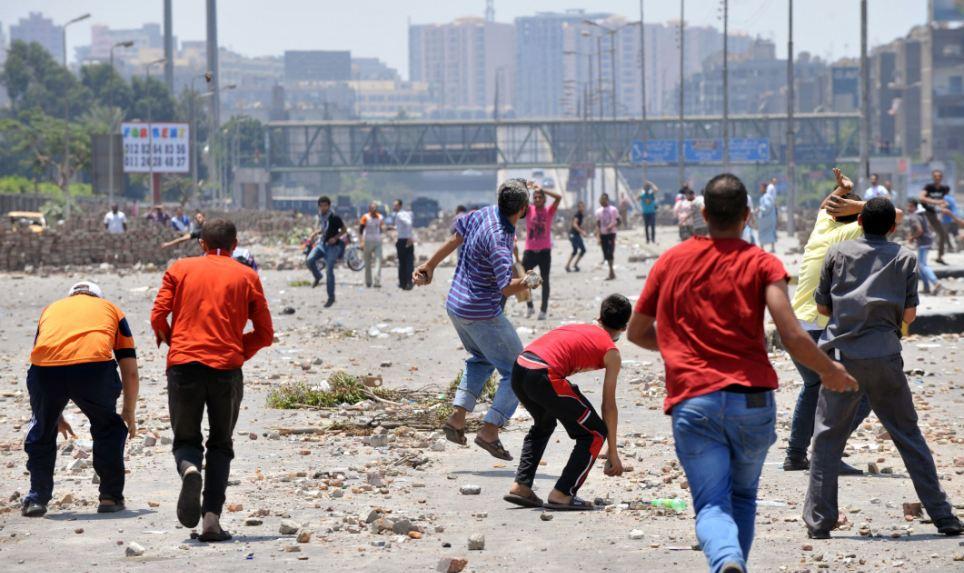
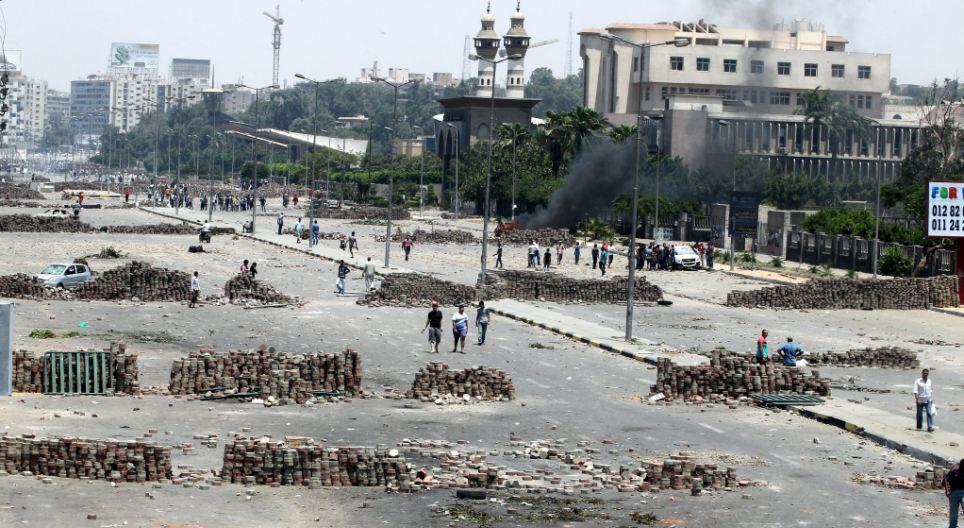
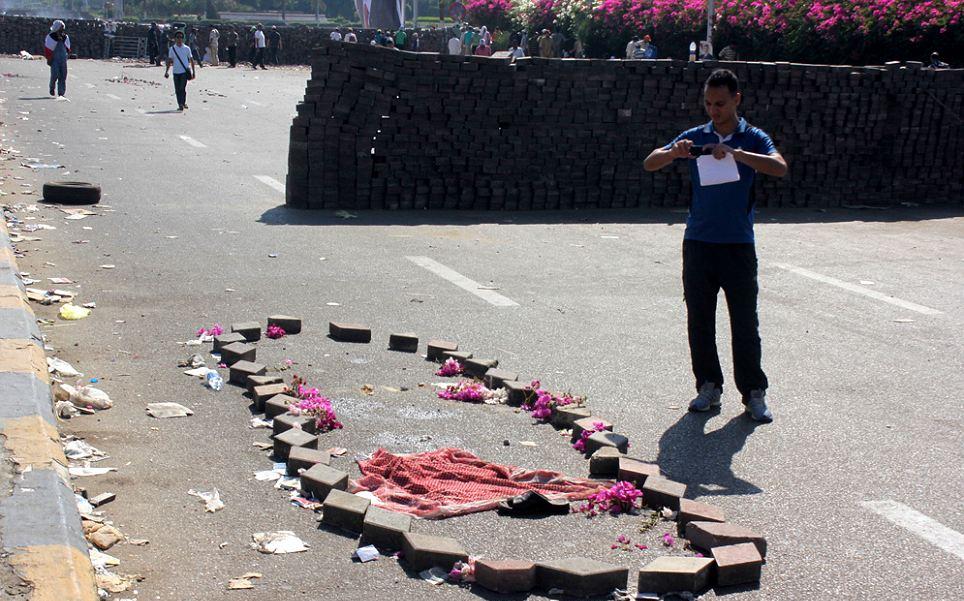
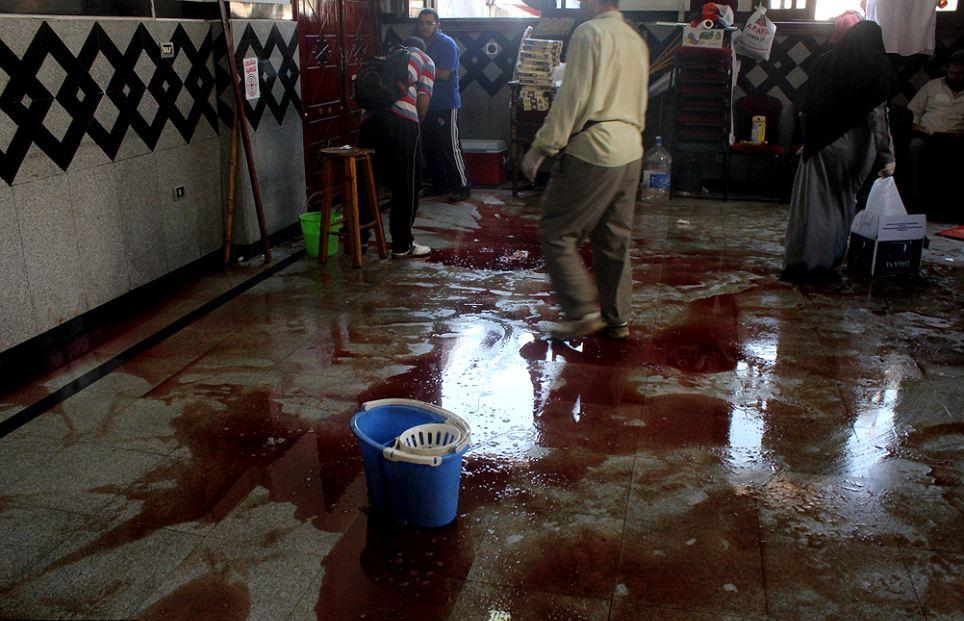
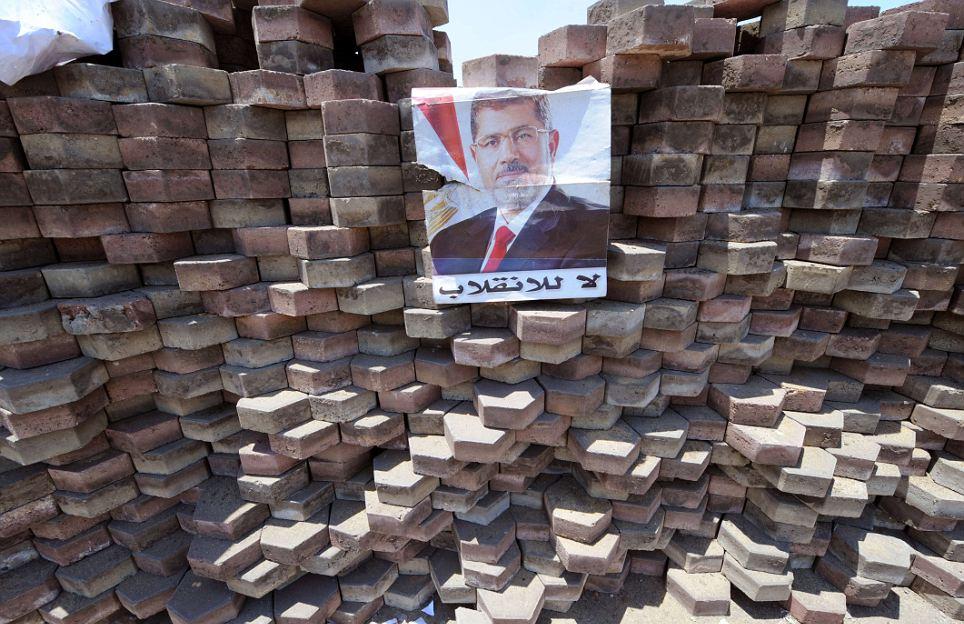

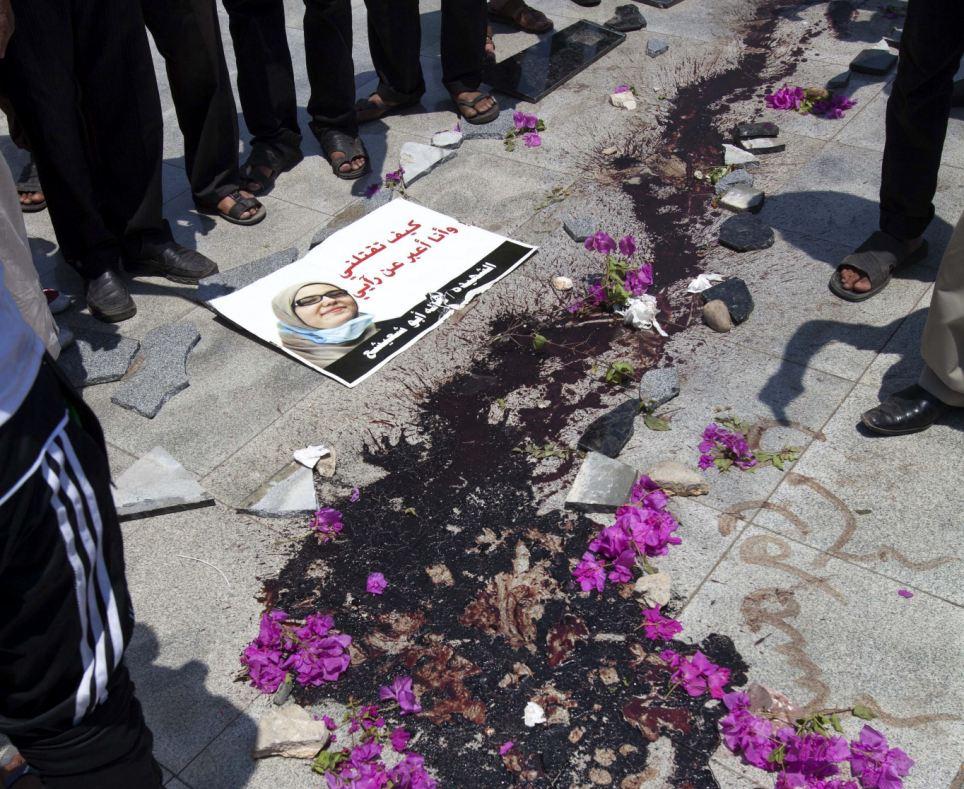
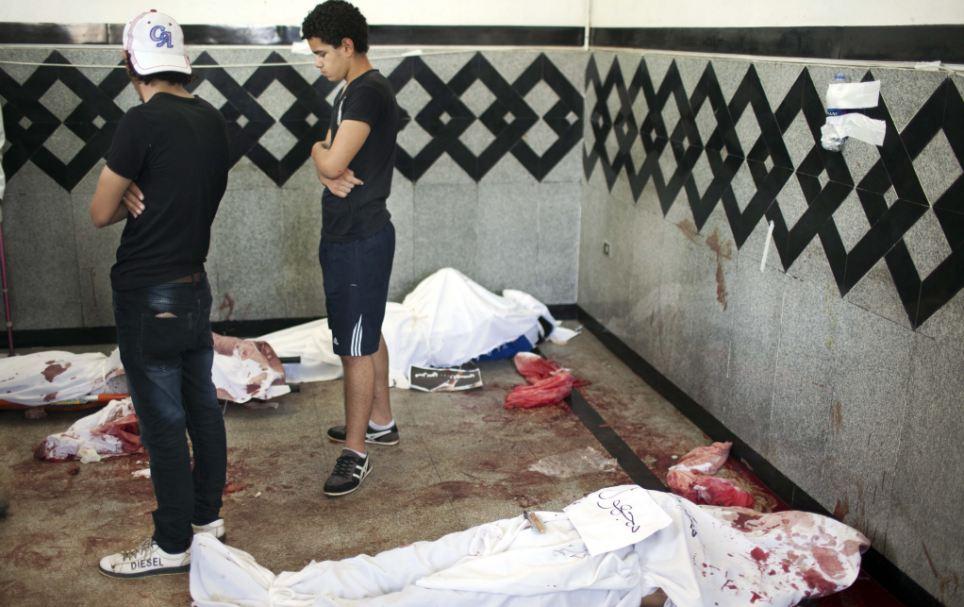
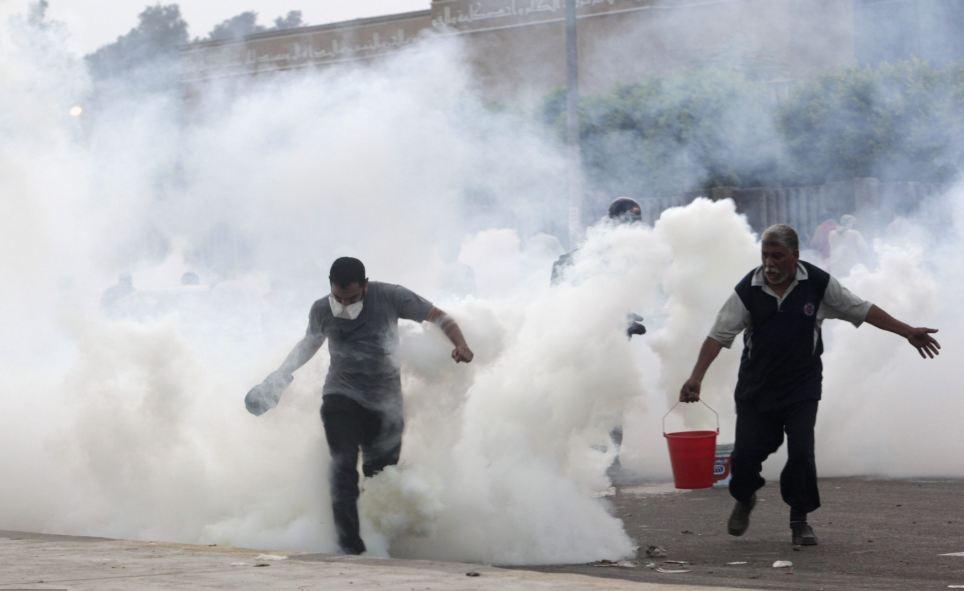
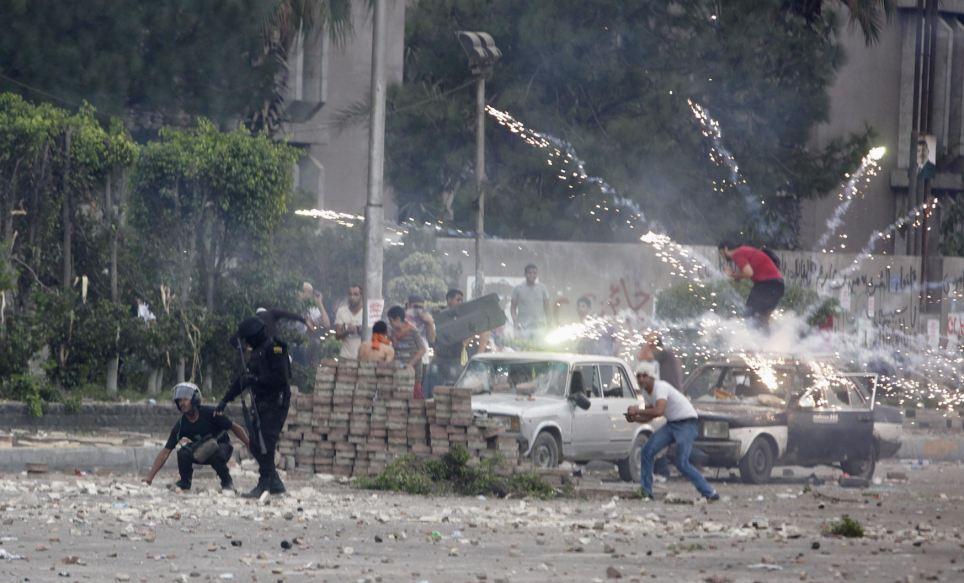
ΠΗΓΗ: http://www.pentapostagma.gr/2013/07/loutro-aimatos-sthn-aigypto.html#ixzz2aRntwSPH
Εγγραφή σε:
Αναρτήσεις (Atom)

